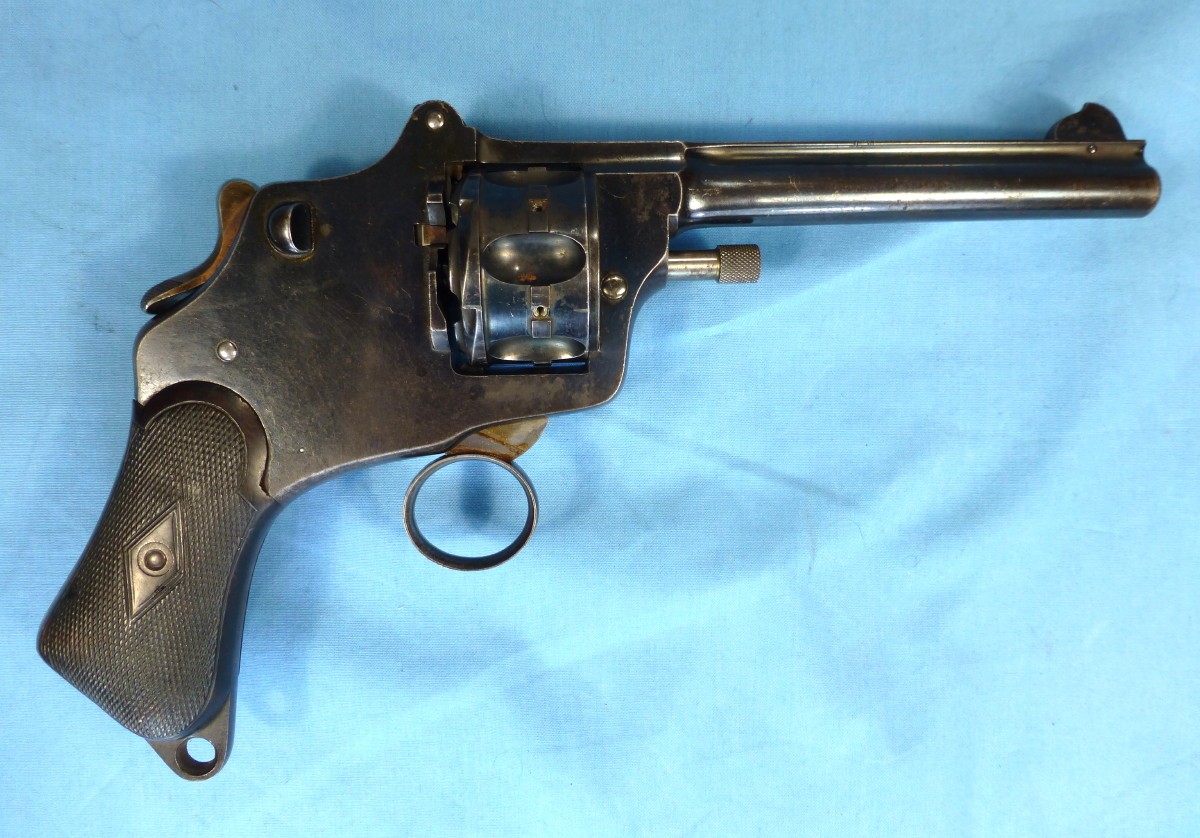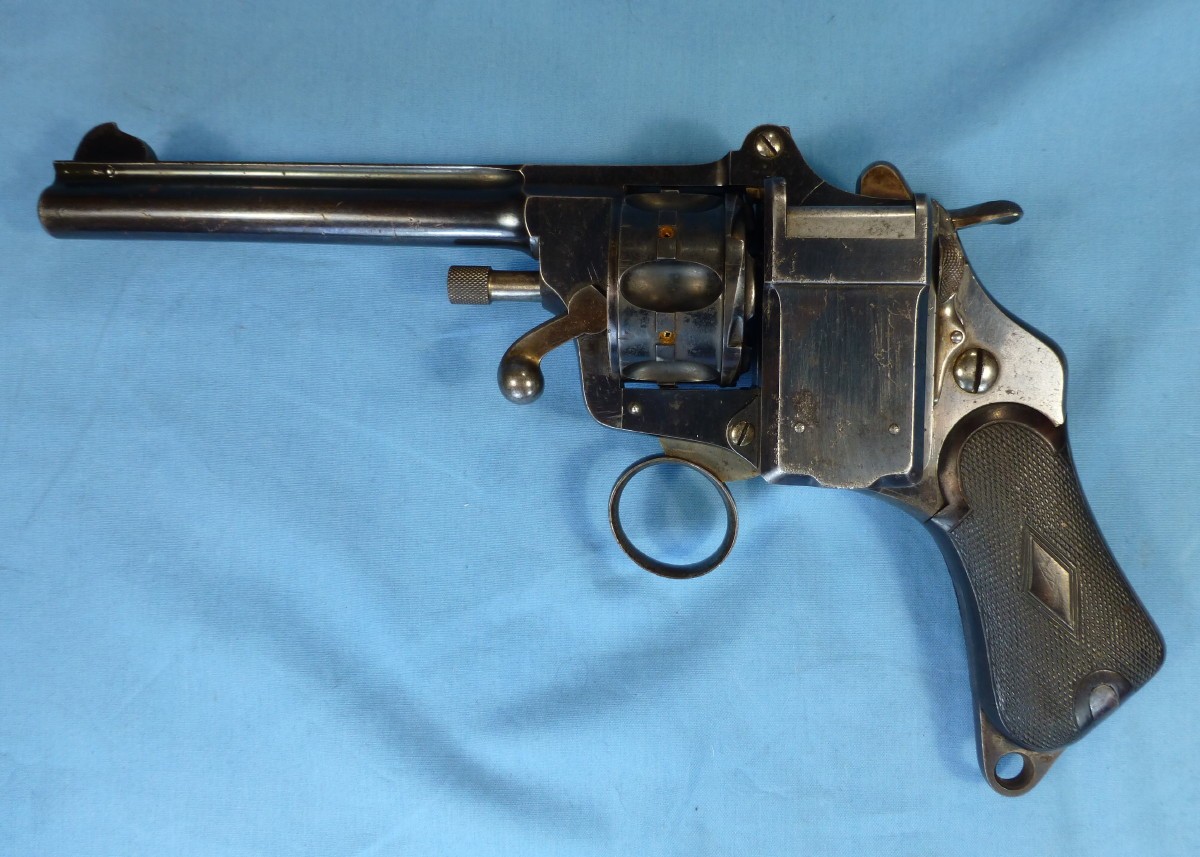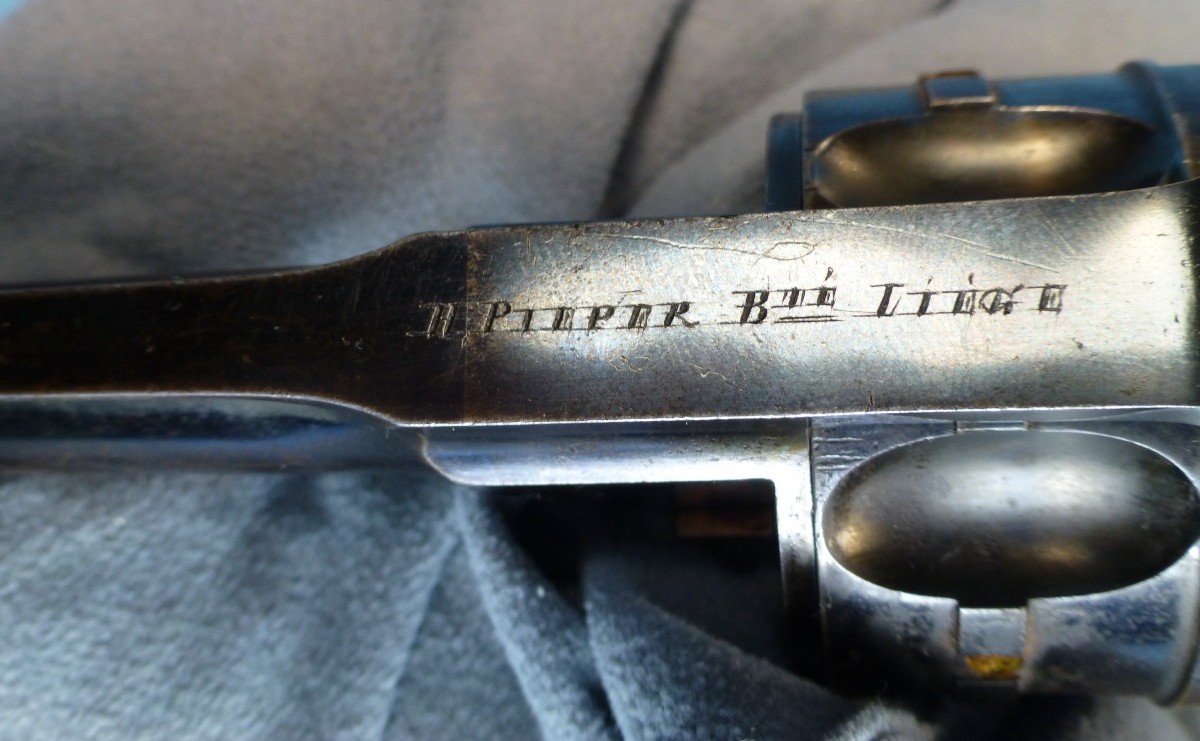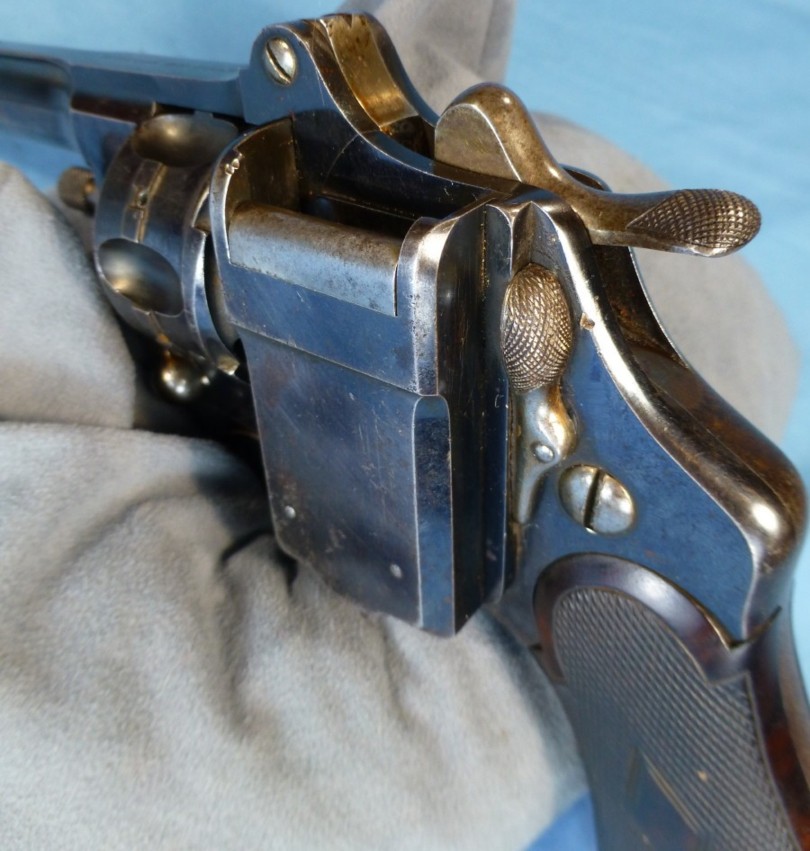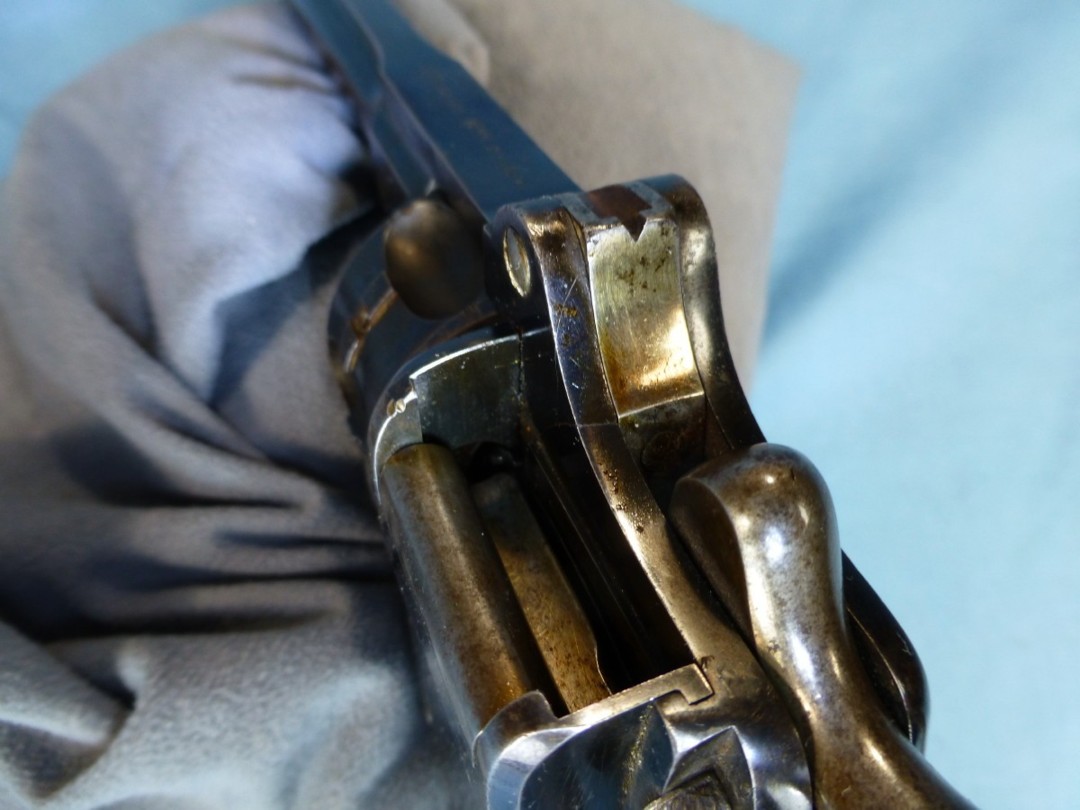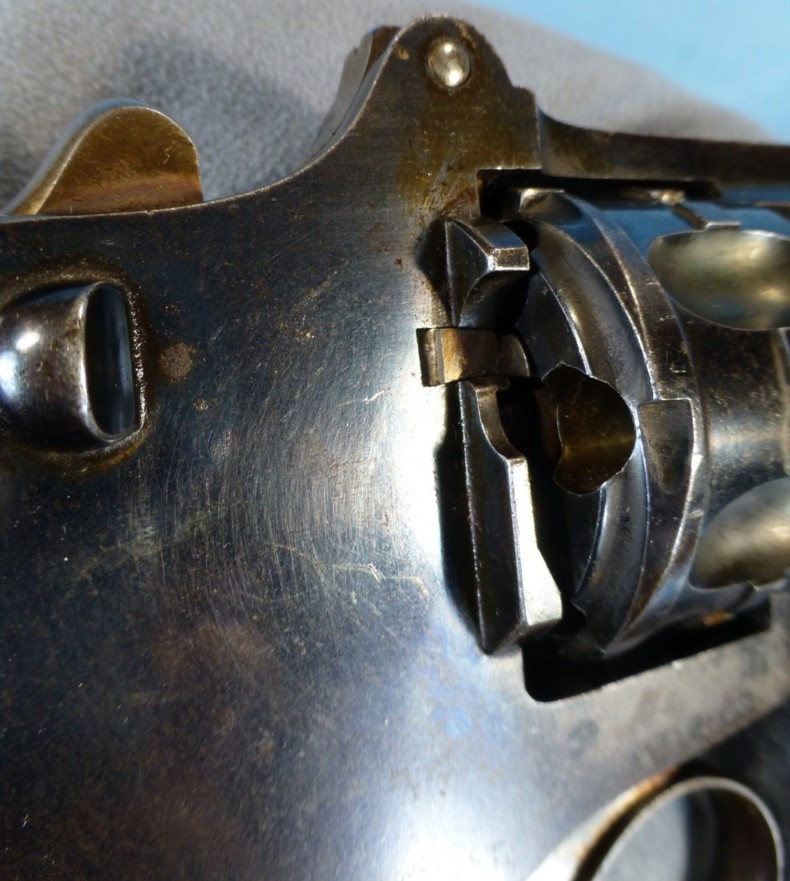Some of the most beautiful work of this craftsman, and many others, are in this book “Liège Gunmakers through their Work. 1800 - 1950”.
For more detail see: LIEGE GUNMAKERS
Henri Pieper
Revolver experimental Reynoso
The story as far as I know:
This is an experimental revolver marker by the well known Belgian designer H.
Pieper of Liege.
It came with a tag that said:
“War souvenir from Liege Belgium.
Not any ano (ammo) to work in it. Experimental
model only 6 were made for forest Ranger’s and no serial no.
This Has Ben (been) pind (pinned).”
The last statement must refer
to the fact that the gun has been made unshootable by installation of a pin
across each chamber so that it can't be loaded.
I assume that at some time this gun must been
in the possession of someone in a country with strict gun control laws.
There is a spring-loaded magazine on the left side
with a port that aligns with the chamber next to be fired. The action operates
an extractor for empty cases on the right as well as a mechanism on the left to
pull rounds out of the magazine.
I
gather that the intention was to auto extract and then
reload whenever an empty cylinder aligns with the magazine.
I suppose you could keep reloading through the
magazine.
When the lever in front of the cylinder on the left is
moved to the up position it frees the cylinder axis pin so that it and the
cylinder can be removed.
It appears to be about 9 mm and may have
required special ammunition to work
correctly with the complex mechanism.
R.P.
It is also unknown how well the García-Reynoso system
worked.
The revolver required special rimless ammunition with
a tapered case and a fully enclosed bullet that has long been unavailable.
Also, this example has unfortunately been
“de-militarized” by having pins installed across the chambers.
What is known is that this sophisticated and
complicated weapon was developed just at the time when the first practical
autoloading guns, such as the Borchardt/Luger, Mauser and Browning systems, were
coming to the market.
This revolver was identified for the owner by
Michel Druart, the author of a French language book on the Pieper family of gun
makers.
See :
http://handfulsofhistory.tumblr.com/
Examination of the patent (see below) allows us to correct the assertions of the
text of R.P., the caliber is 7.65mm and here are the specifications and photos.
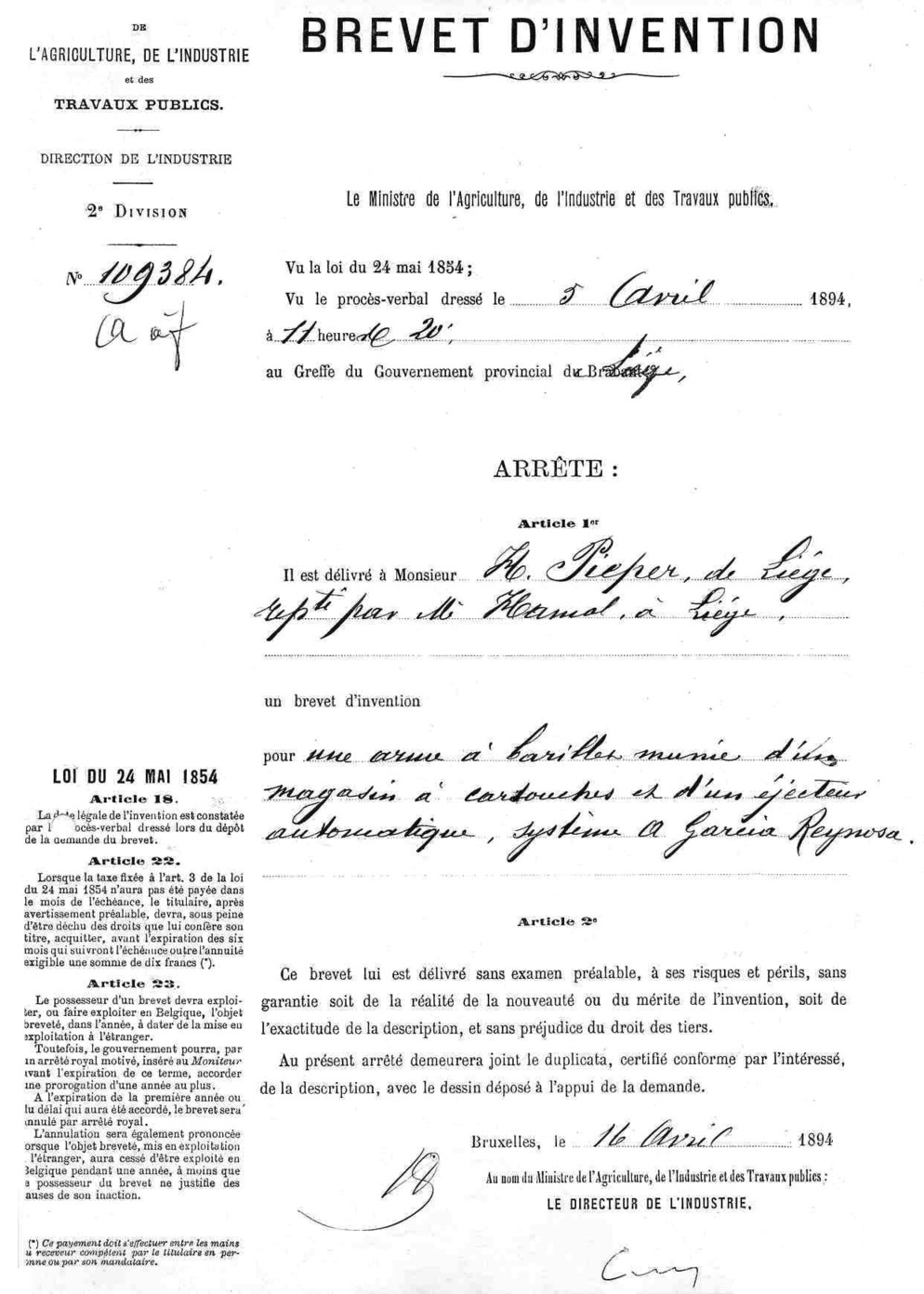
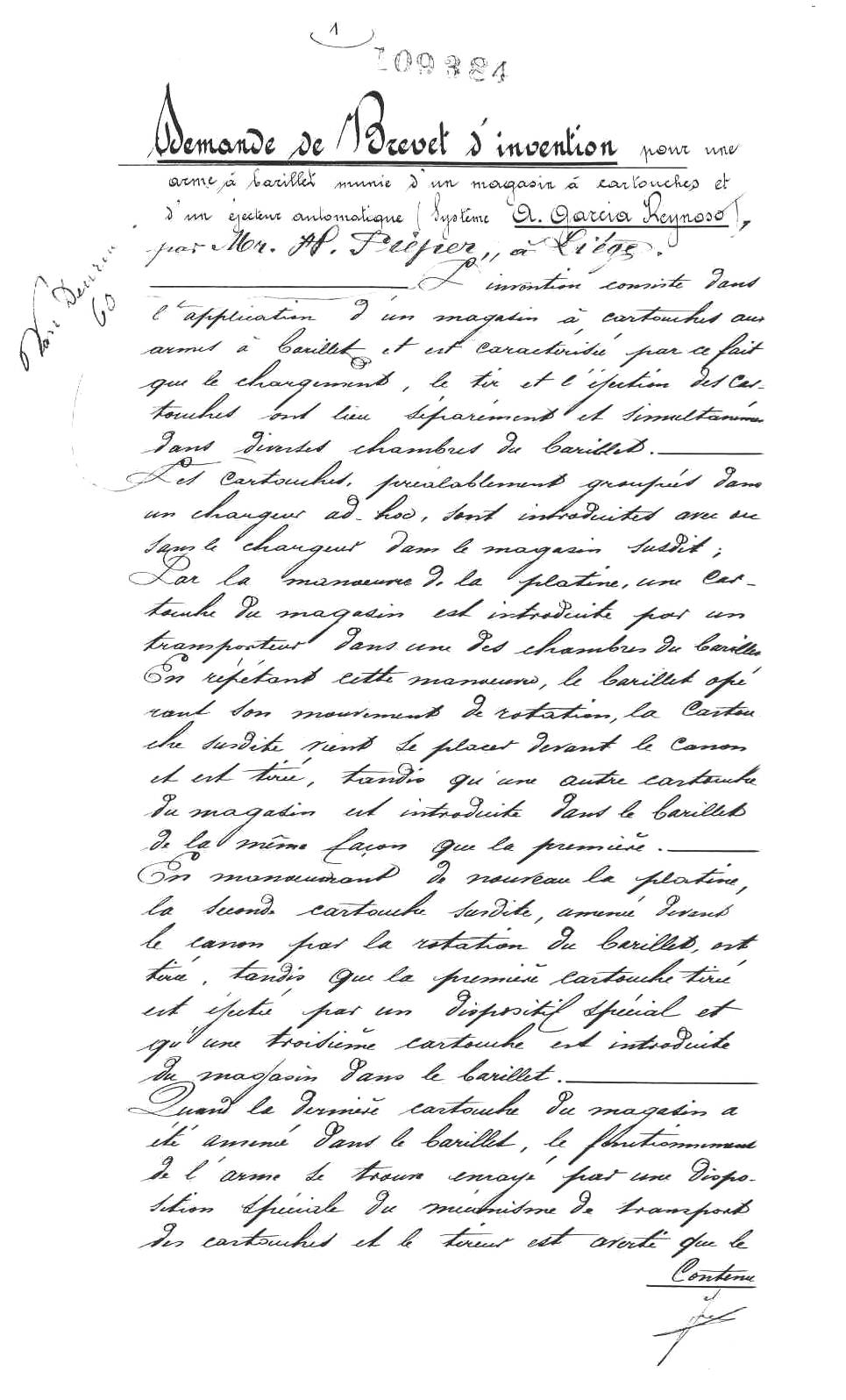
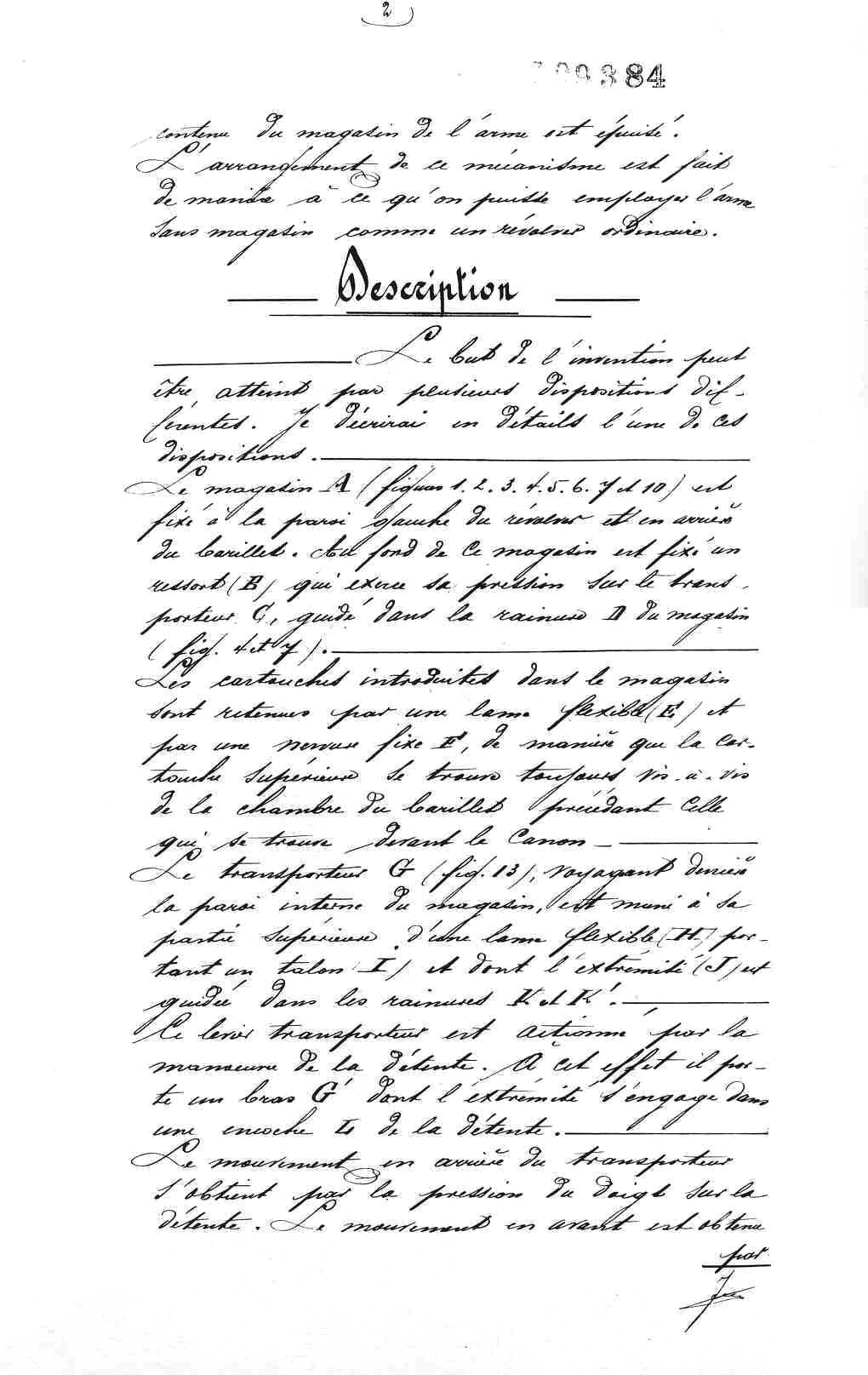
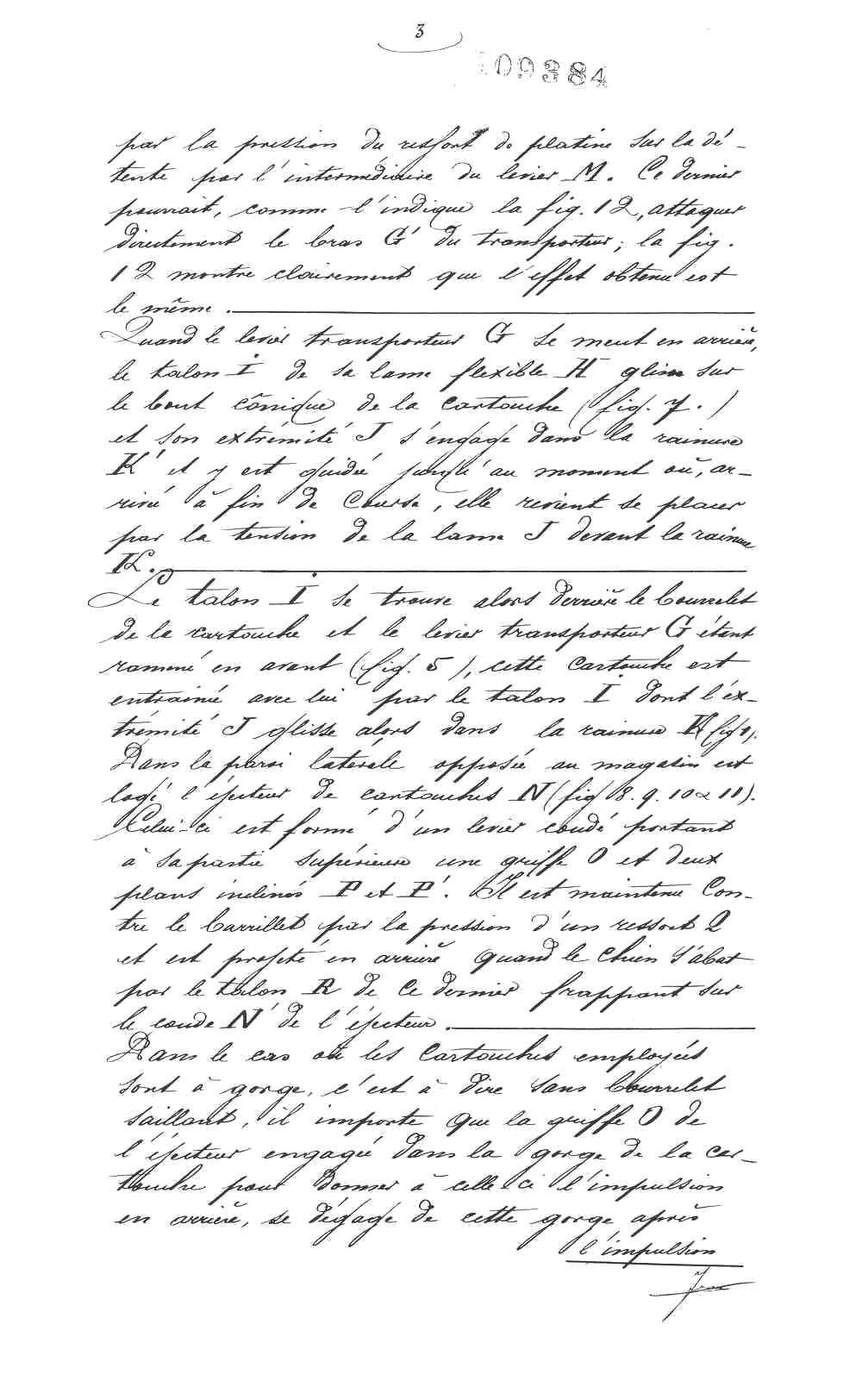
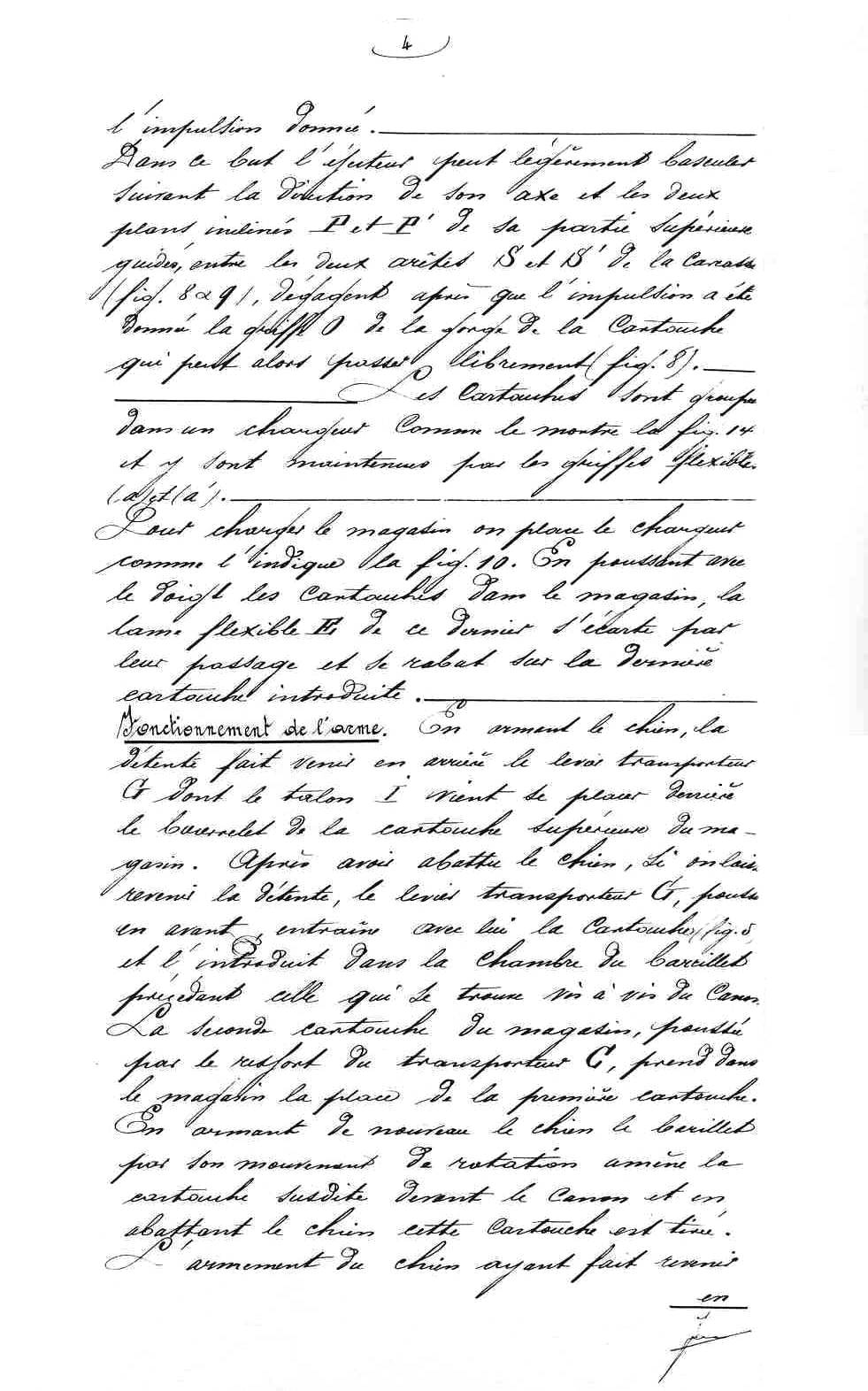
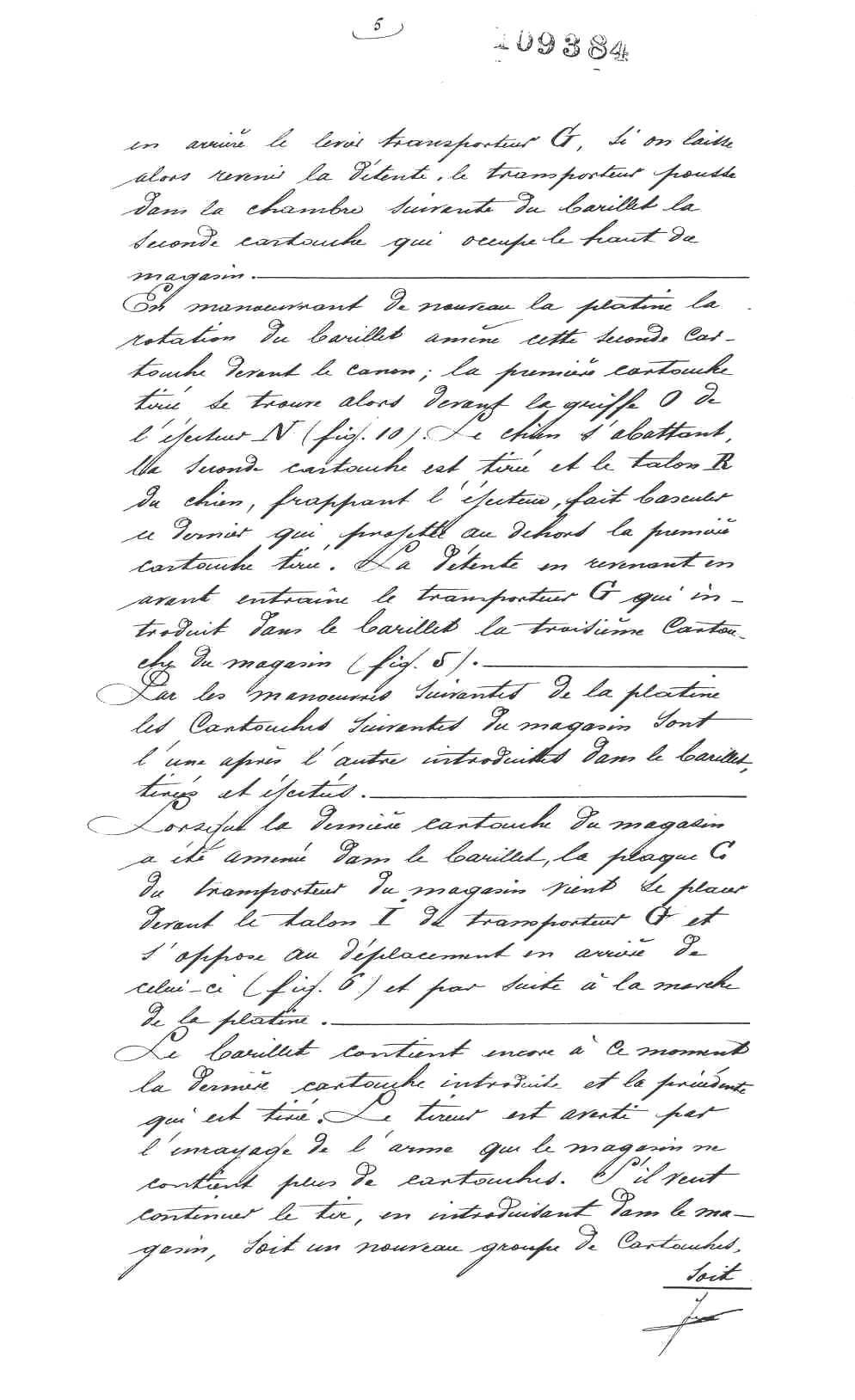
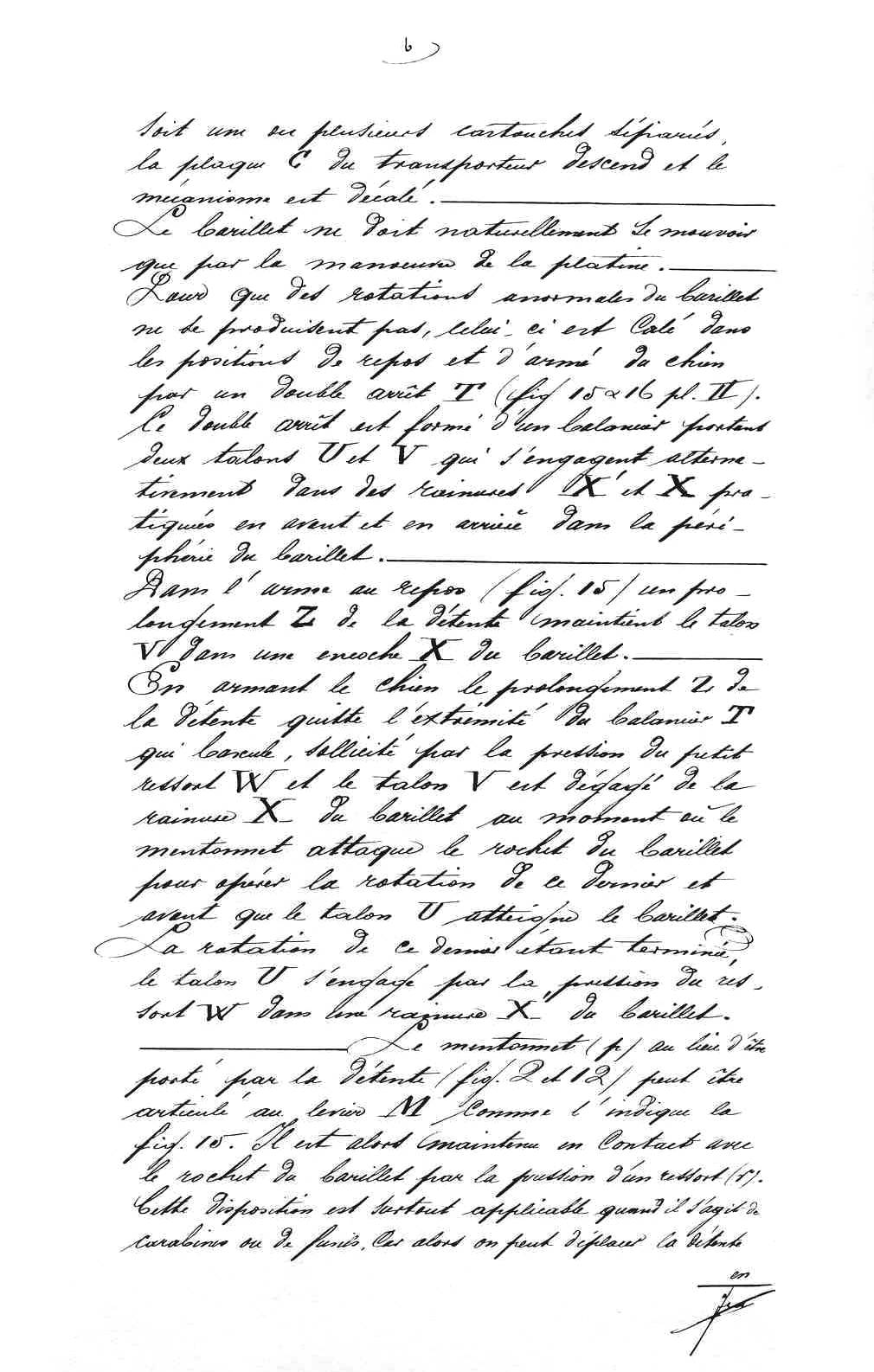
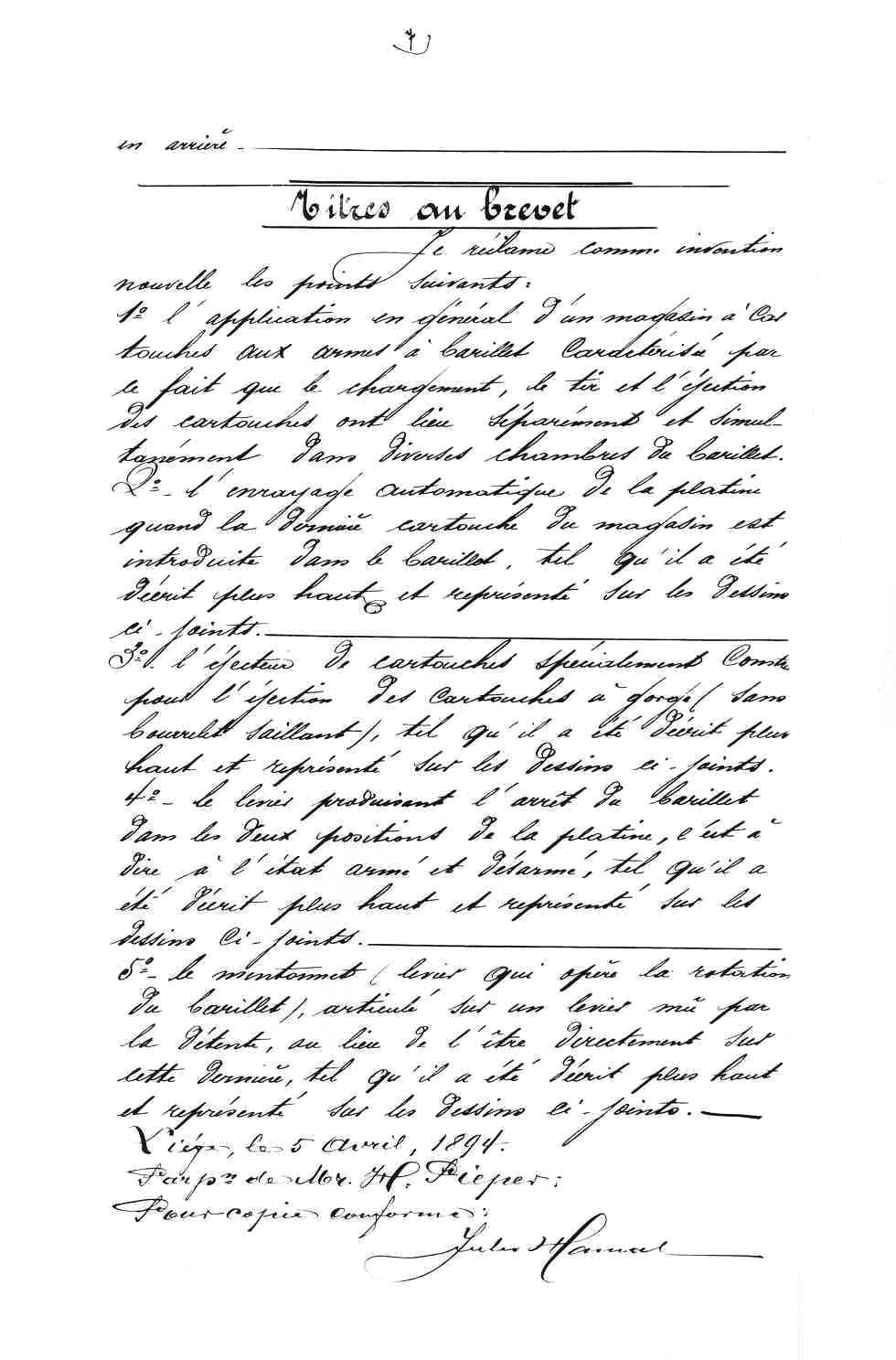
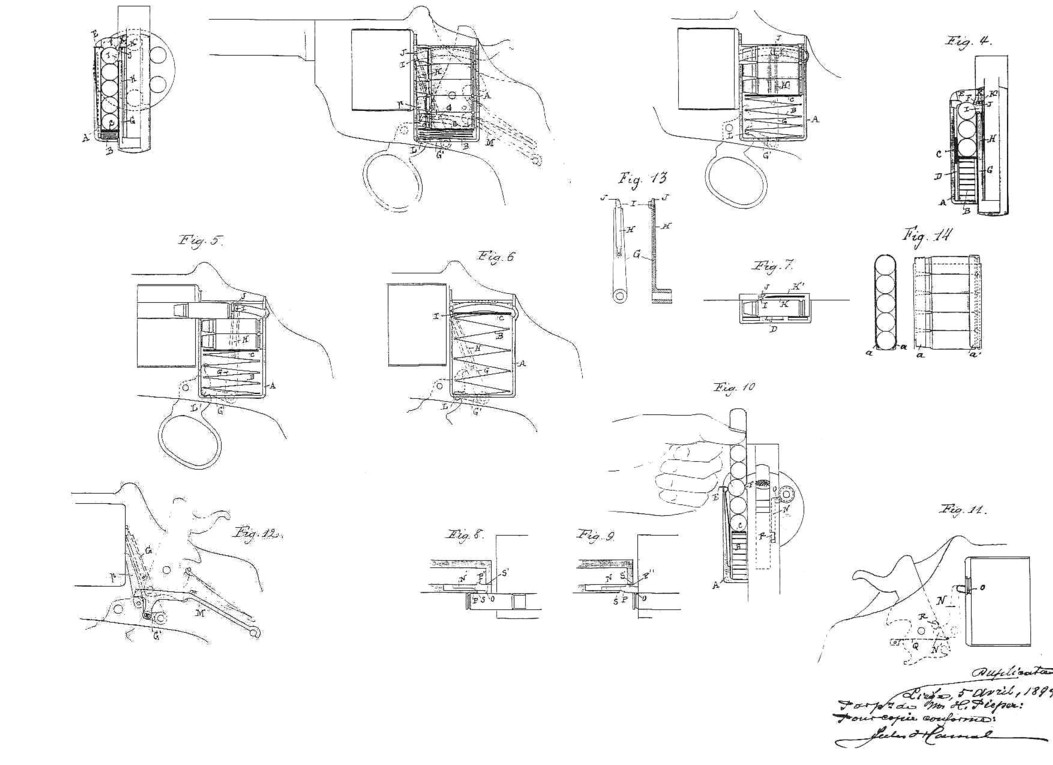
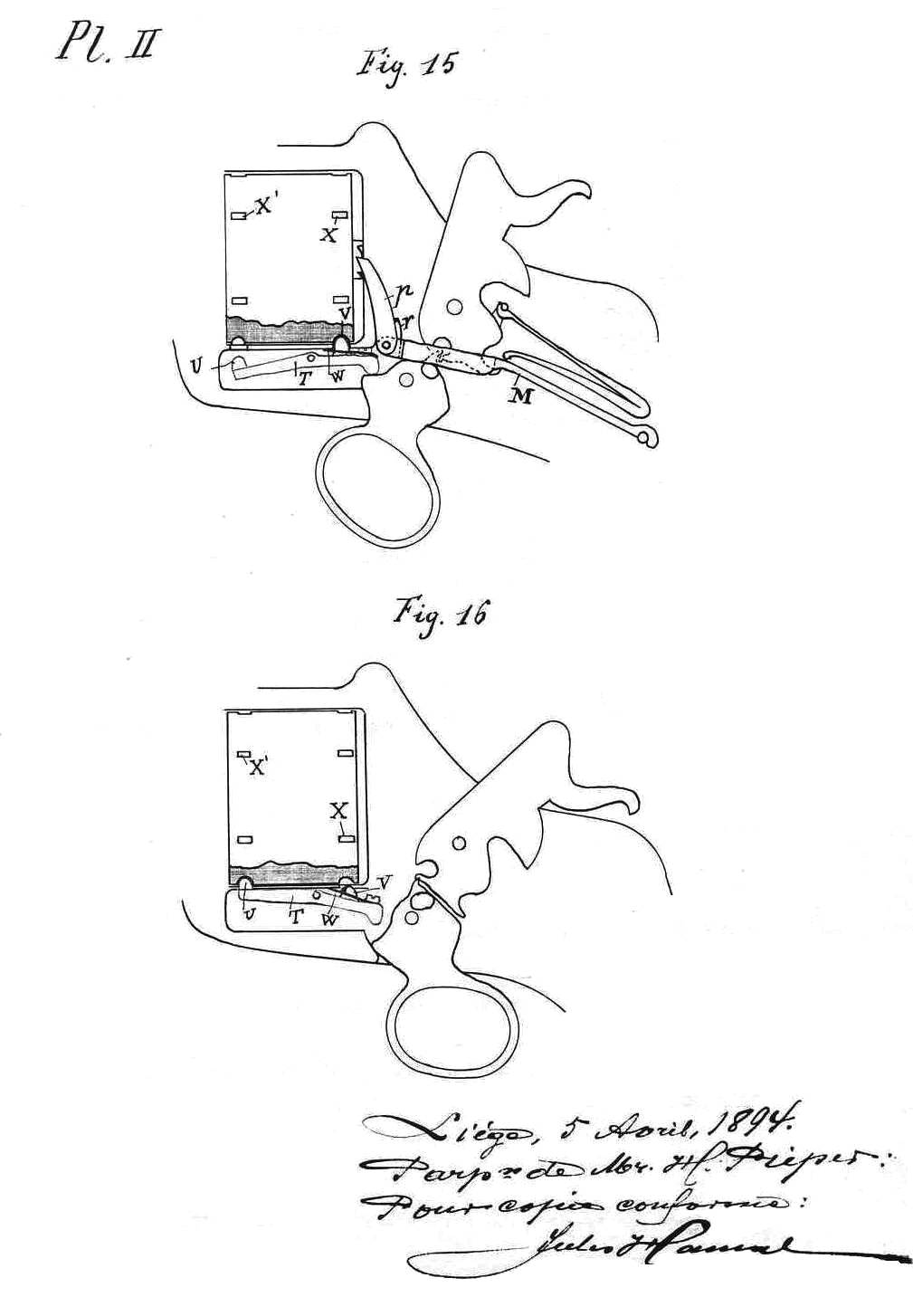
And here is ammunition
7,8 mm Reynoso
(1)

TIR CENTRAL / FC
08-030-BGC-040
Based on the very detailed explanations given by H. Pieper in he's patent application AND the historical document about de inventor Reynoso:
- The actual caliber is 7.65 mm like the ammunition of the Belgian M1889 Mauser rifle.
- Whether the bullet is fully enclosed in the shell or not, is unclear.
- The cartridges are NOT rimless. They appear to be grooved center fire cartridges with a quite important groove to accomodate the extractor/ejector mounted on the right side of the frame..
According to Pieper's description, the revolver cannot be fired with a full loaded cylinder and a full loaded additional magazine together. The cylinder can only be loaded with one round in the chamber right before the barrel, with the hammer in resting position.
When the hammer is cocked, the loaded chamber is brought in line with the barrel, while the mechanism pushes the first cartridge from the magazine into the next empty chamber, which is then in line with the magazine.
After the shot and when the hammer is cocked again, the empty shell is expelled by the extractor on the right side of the frame, while the mechanism pushes the next cartridge into the next empty chamber on the left side and the next shot is fired.
So, the cylinder cannot contain more than 2 live rounds and one empty shell when in use (one in line with the barrel, one in the next chamber in line with the magazine, and the empty shell on in the chamber immediately after the barrel)
Except of course if the shooter does not use the additional magazine.
The reason why the cylinder has 6 chambers while the magazine contains only 5 is unclear; but I guess this is related to room in the lock to allow the system to work, and the hand of the (right or left handed) user.
When the last cartridge has been fired, the system locks the inner mechanism to warn the shooter. Pieper does not say anything about removing the empty additional magazine and replace it by a full one; instead, he explains that an empty magazine can easily be reloaded either one by one, or with a clip of 5. I guess both are possible.
Anyway, my guess is that this intricated system allows to reload much faster than any other revolver of the time. Only, it came too late to compete with the semi-autos Mauser, Borchardt, Lüger and Browning that took over the whole market around the turn of the century.
Marcel
